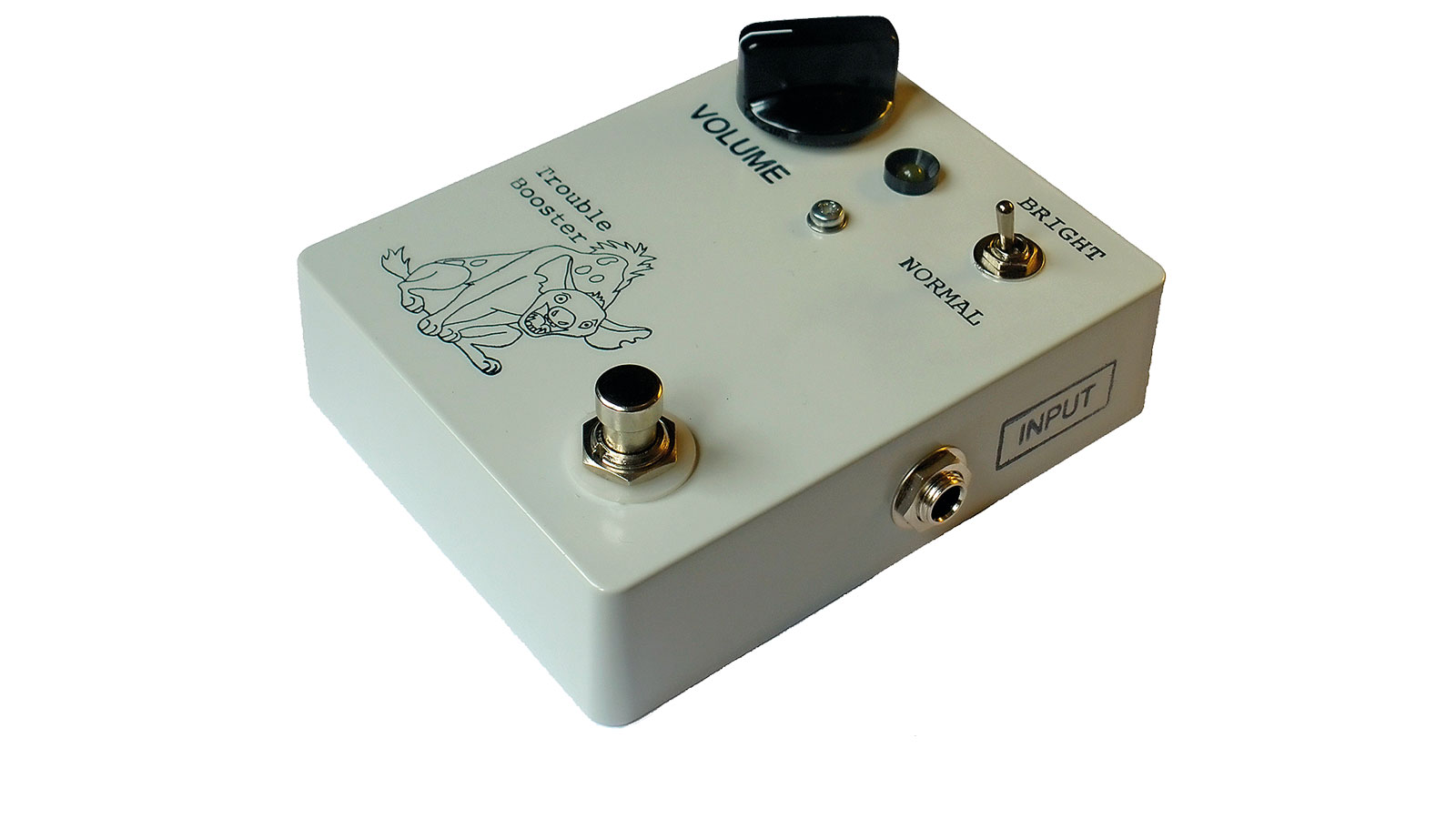MusicRadar Verdict
If you are looking for extra richness, harmonics and sustain, this delivers in two distinct flavours - a front-end boost with a bit of Texan raunch.
Pros
- +
Works brilliantly with a dirty valve amp. Nice build. Easy operation. Two types of boost.
Cons
- -
Price.
MusicRadar's got your back
West Sussex-based Bigfoot Engineering made its MusicRadar review debut at the tail end of last year with a roundup that included the excellent Octo Puss Prime pedal.
"If your valves are already cooking away, this is a pedal that will take things further"
Now, following on from its limited edition Treble Booster, inspired by Brian May and built into a 35mm film can, the new Trouble Booster features a more conventional housing, and is apparently inspired by the guitar sounds of ZZ Top legend Billy F Gibbons.
Sounds
In the tradition of the classic Rangemaster treble booster, the Trouble Booster is a Germanium transistor design. It features a volume knob and two switchable modes: normal, with a full frequency response; and bright, with reduced bottom end.
Unity gain seems to be somewhere around the nine o'clock position, where you get no volume jump but a little bit more dirt. Winding up the knob adds more overdrive - which we felt worked best with an already dirty amp.
This is where the Trouble Booster finds its true forte: if your valves are already cooking away, this is a pedal that will take things further and enhance the tonality with a saturated richness, laden with harmonics.
The normal mode offers a fat sound with an enhanced top end, while the bright mode doesn't push your amp quite as much, but offers a defined bite to the note that cuts through. All this with a sensitivity that responds well to variations in pick attack and guitar volume.
Trevor Curwen has played guitar for several decades – he's also mimed it on the UK's Top of the Pops. Much of his working life, though, has been spent behind the mixing desk, during which time he has built up a solid collection of the guitars, amps and pedals needed to cover just about any studio session. He writes pedal reviews for Guitarist and has contributed to Total Guitar, MusicRadar and Future Music among others.
![Chris Hayes [left] wears a purple checked shirt and plays his 1957 Stratocaster in the studio; Michael J. Fox tears it up onstage as Marty McFly in the 1985 blockbuster Back To The Future.](https://cdn.mos.cms.futurecdn.net/nWZUSbFAwA6EqQdruLmXXh-840-80.jpg)
“We’re looking at the movie going, ‘Urgh! It’s kinda cheesy. I don’t know if this is going to work”: How Chris Hayes wrote Huey Lewis and the News’ Back To The Future hit Power Of Love in his pyjamas

“I thought it’d be a big deal, but I was a bit taken aback by just how much of a big deal it was”: Noel Gallagher finally speaks about Oasis ticket chaos

Uli Behringer speaks out on Behringer's pricing strategy: "Our competitors say 'how much could I charge and get away with it?' We take the cost, add a small margin and that's the sale price"











